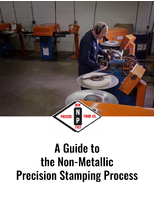Sample Management Software features modular scalability.
Share:
Press Release Summary:
Offering comprehensive audit trail and genealogy tracking, Mosaic v4.0 provides enterprise-wide management of biological samples and reagents in many different types of life sciences research organizations. Program incorporates modules for tracking manually accessed stores and manual operations, such as hand pipetting, for small-scale operations. Built-in Substance Registration System handles allocation of substance identifiers and capture of substance metadata.
Original Press Release:
Titian Software Launches Mosaic 4.0
Proven sample management software now encompasses biological samples and reagents
PHOENIX, AZ, US - Today at SBS 2010 in Phoenix, Titian Software launched version 4.0 of its Mosaic Sample Management software. Mosaic is already established as the leading sample management software for small molecule compound libraries, and is used by ten of the top 20 pharma companies. Applications of the new Mosaic 4.0 are extended to the enterprise-wide management of biological samples and reagents in many different types of life science research organisations in industry and academia.
Mosaic 4.0 builds on the proven strengths of earlier versions, including modular scalability, advanced instrument integration, and comprehensive audit trail and genealogy tracking. In response to the specific requirements of biological sample management, Mosaic 4.0 now incorporates enhanced modules for tracking manually-accessed stores and manual operations, such as hand pipetting, for smaller-scale operations. A new built-in Substance Registration System handles the allocation of substance identifiers and the capture of substance metadata, and Mosaic can still seamlessly link to external registration systems if required. For higher-throughput laboratories, Mosaic 4.0 builds on its workflow management capability and wide array of integration modules for automated stores, liquid handlers and other instruments. The new functionality makes version 4.0 well-suited to the management of clinical trial samples and reagents, therapeutic and anti-drug antibodies (ADA), cell lines and biobank samples - in addition to small molecule compounds.
"The next generation Mosaic 4.0 was conceived in response to customer demand", said Richard Fry, Titian's Director of Business Development. "The new functionality to handle biological samples has been developed in close partnership with our customers in leading pharma and biotech companies, and I'm particularly pleased that the first installation of Mosaic 4.0 is in a validated environment in clinical trials. Our goal with version 4.0 is to build on our track record in compound management to establish Mosaic as the software of choice for the management of all sample types."
For more information please visit www.titian.co.uk
Titian
Established in 1999, Titian supplies software products and consultancy services that help clients to improve the management of samples (compounds, reagents and biological samples) to their vital research processes. 10 of the Top 20 pharma/biotech companies use Titian's Mosaic sample management technologies to provide increased sample quality, service levels, and sample conservation while reducing overall operating cost and time.
Mosaic - Sample Management Software
Mosaic is Titian Software's comprehensive, modular software product to control and monitor all aspects of sample storage and preparation. These include sample inventory tracking and ordering, workflow management, control of third party robotic equipment such as automated stores and liquid handlers, and integration with existing IT systems. From small biotech to global pharma, Mosaic helps to provide a seamless, error-free sample supply chain.
Consultancy Services
Titian provides strategic and technical consultancy to help life science research organisations optimise their sample management processes. Building on over 10 years of experience and extensive knowledge of industry best practice, Titian offers consultancy services including user requirements capture, process mapping and re-engineering, and software system implementation.




